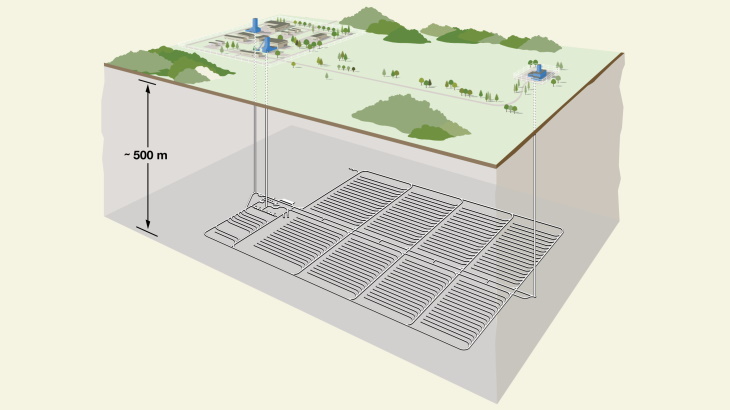One-year delay in Canadian repository site selection
Canada's Nuclear Waste Management Organization (NWMO) has said that, due to the impacts of the COVID-19 pandemic, it now does not expect to identify a preferred site for a deep geological repository until late-2024. It had previously expected to make the decision next year.

A concept for the Canadian used nuclear fuel repository (Image: NWMO)
The NWMO is charged with implementing Canada's plan for the safe, long-term management of used fuel, known as Adaptive Phased Management, and launched the site selection process in 2010. The selected site must have the support of "informed and willing" hosts and NWMO is working to ensure that the chosen location will be safe and secure.
By 2012, 22 communities had expressed an interest in learning about the project and exploring their potential to host it. Eleven of those communities went forward to the second phase of the NWMO's preliminary assessment process. By the end of 2019, the list of potential host communities had been narrowed down to two: the Revell Site, some 43 km northwest of the town of Ignace, and 21 km southeast of the Wabigoon Lake Ojibway Nation; and the South Bruce Site, about 5 km northwest of Teeswater in the Municipality of South Bruce.
"With a project of such complexity and generational scope, we have always anticipated that we will need to adapt over the course of the process, while also keeping an eye on the long view," NWMO said. "Like all organisations and businesses, several provincial lockdowns associated with the COVID-19 pandemic impacted our work.
"In reviewing our rolling five-year implementation plan and considering the impacts of the pandemic, we have made the decision to shift the timing for site selection. We now anticipate we will identify a preferred site by fall 2024."
NWMO Vice-President of Site Selection Lise Morton said the organisation experienced a significant loss of time for face-to-face engagement and interaction, especially in communities exploring their potential to host the project. "Making this small adjustment in timing also gives us and the potential host communities additional time to review and absorb new information as they consider if hosting the project aligns with their vision and priorities."
Once the final site selection has been made, its safety will be confirmed through a rigorous regulatory review of the repository design and safety case. The regulatory and licensing process is expected to take approximately 10 years to complete.
NWMO said it does not expect the shift in timing in selecting the preferred site to impact the overall schedule for Canada's plan. It noted construction of the repository is still expected to begin in 2033, and operation of the repository is expected to begin in the early-2040s.
Researched and written by World Nuclear News
- China Institute of Atomic Energy
- Nuclear Power Institute of China
- Southwestern Institute of Physics
- China Nuclear Power Operation Technology Corporation, Ltd.
- China Nuclear Power Engineering Co., Ltd.
- China Institute for Radiation Protection
- Beijing Research Institute of Uranium Geology (BRIUG)
- China Institute of Nuclear Industry Strategy (CINIS)
- China Nuclear Mining Science and Technology Corporation


